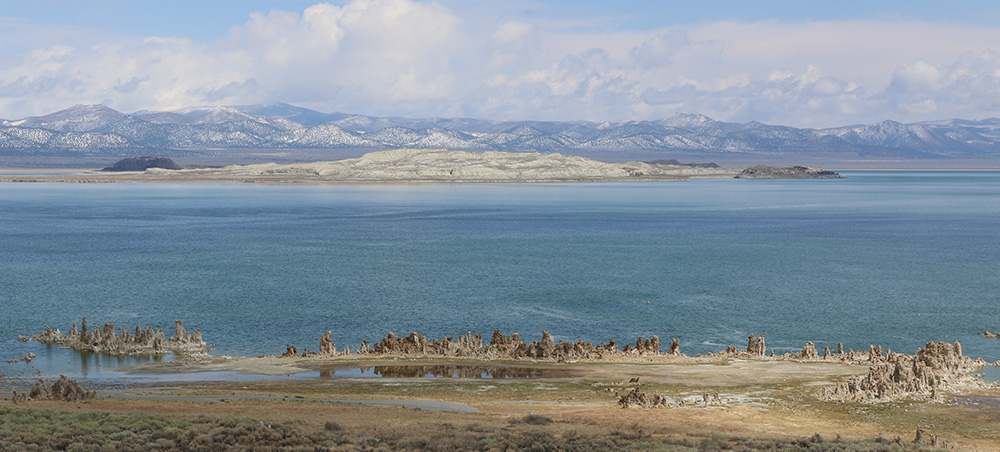
The word of the day, week, month, and year in Southern California water (as with all of California) is “drought.” How bad will it be? How warm will it be? How can Governor Jerry Brown’s 25% water use reduction be implemented? What about next year?

Los Angeles and Mono Lake are two ends of a watershed, connected by the Los Angeles Aqueduct. The effects of the drought on Los Angeles—and the response plans—are critical to Mono Lake, especially in this dry year as lower water exports kick in to slow the falling level of Mono Lake. The good news is that LA is already working on achieving an aggressive set of new water conservation goals laid out by Mayor Eric Garcetti last fall.
Garcetti’s directive requires Los Angeles to reduce per-capita water use 20% by 2017, and then move further to reduce imported water use by 50% by 2024. The plan encompasses water conservation, water recycling, stormwater capture, and local supply cleanup. Voluntary and institutional measures are the focus for achieving these goals, and range from major water recycling and groundwater cleanup facilities to measures as diverse as rain barrels, turf removal, and recirculation of water at car washes. However, Garcetti set forth incremental targets that must be met along the path to achieving the 20% reduction goal and indicated that mandatory restrictions would be implemented if the targets are not met.
By being proactive, Los Angeles is well-positioned to meet the urgent mandates of the fourth year of statewide drought. On April 1, Governor Brown ordered mandatory urban water conservation of 25% for the year in response to the dismal winter snowpack. Some urban areas with very high water use levels have to conserve even more; the 36% requirement set for Beverly Hills is an oft-cited example. Los Angeles received credit for the success of its efforts to date and was issued a reduced requirement of 16% that will require aggressive action but is well within the Mayor’s goals.
Turf removal is one area where the Los Angeles Department of Water & Power’s (DWP) conservation efforts have skyrocketed. Thanks to incentives of $3.75 per square foot of lawn removed, demand is strong. DWP General Manager Marcie Edwards, speaking at the Committee’s Andrea Lawrence Award Dinner in April, reported that “a square foot of turf uses 44 gallons of water a year … in the first six months of the year we’ve removed four million square feet of grass, and we believe we’re going to be at 18 million square feet removed by the end of the summer.”
These conservation programs are also integral to the successes achieved so far in protecting Mono Lake—indeed, they have been critical to answering the question of how Mono Lake can be protected without transferring the city’s water demands to other natural resources. This year Los Angeles reduced its water exports from the Mono Basin by 11,500 acre-feet to comply with the state mandates protecting Mono Lake, the first time in history that such reductions have taken place without a court involved. Following the rules is the right thing to do—and the success of water conservation in Los Angeles makes it possible.
In this drought year of unprecedented, never-before-seen low runoff from the Sierra, we will experience many never-before-seen things. Los Angeles and the Mono Lake Committee are both working to make sure that unprecedented water conservation success is one of them.
This post was also published as an article in the Summer 2015 Mono Lake Newsletter.
